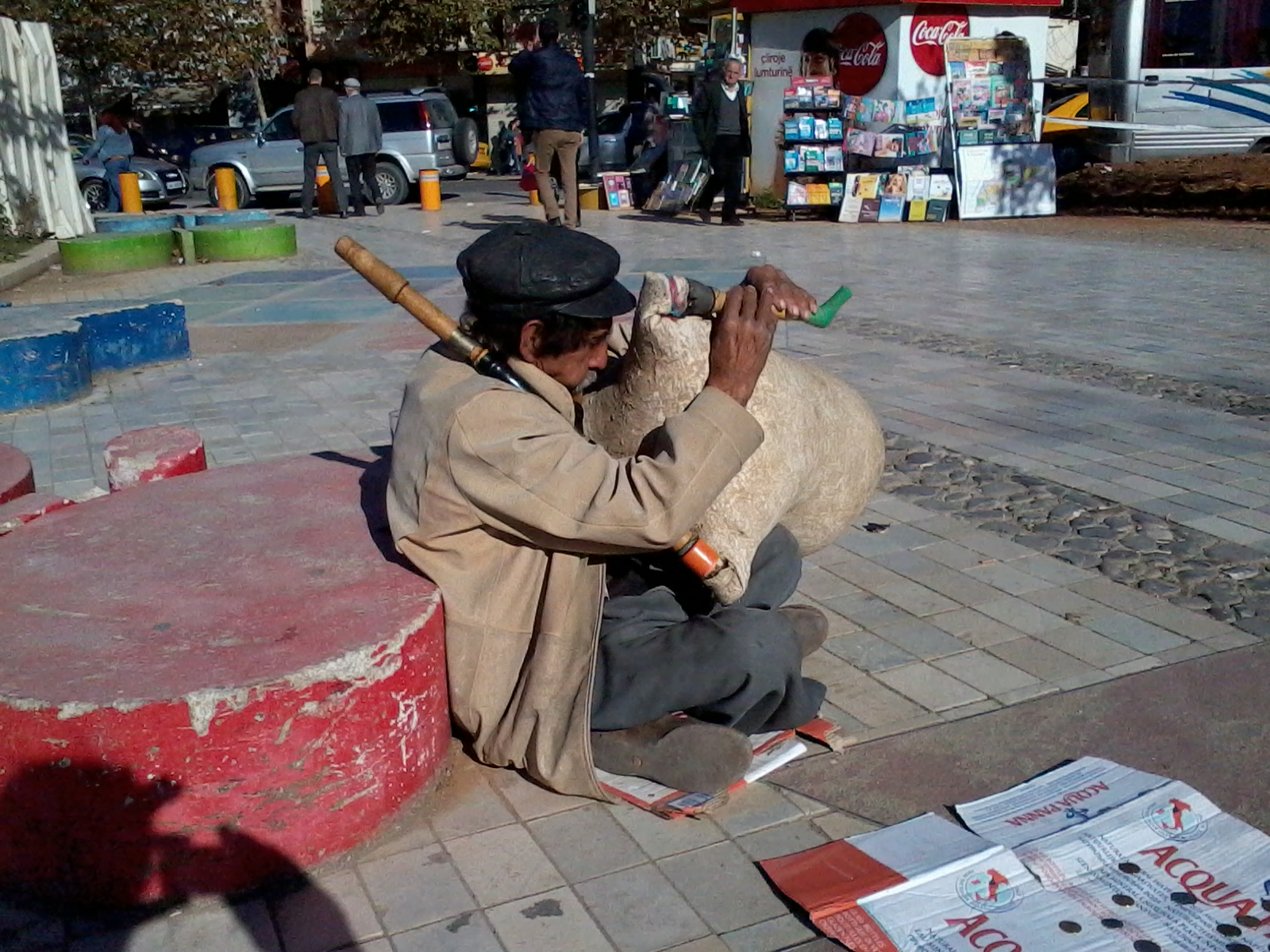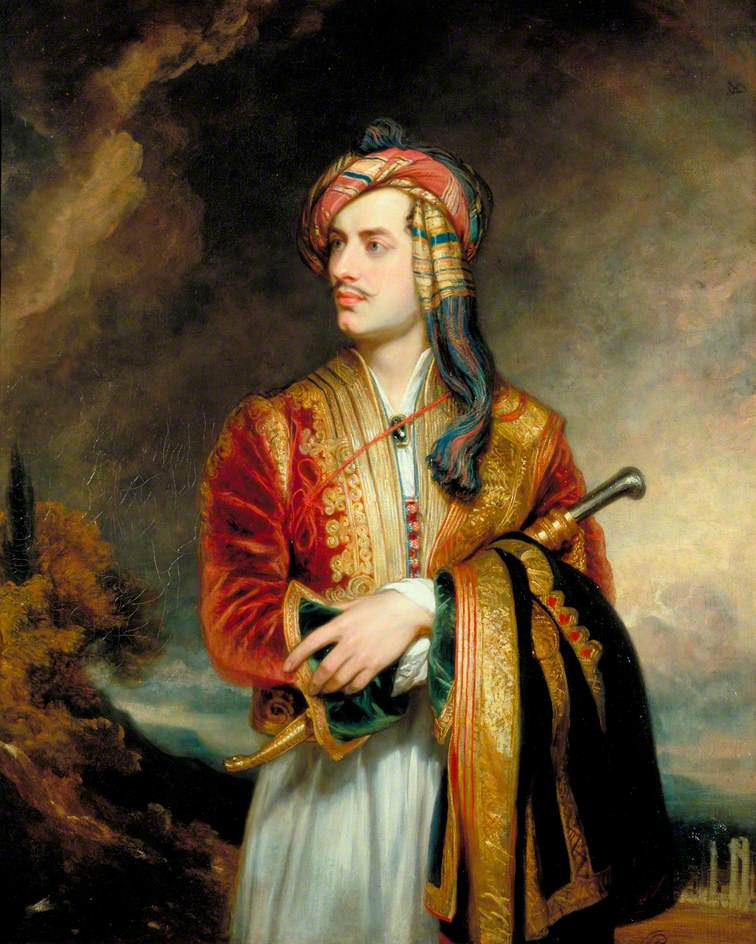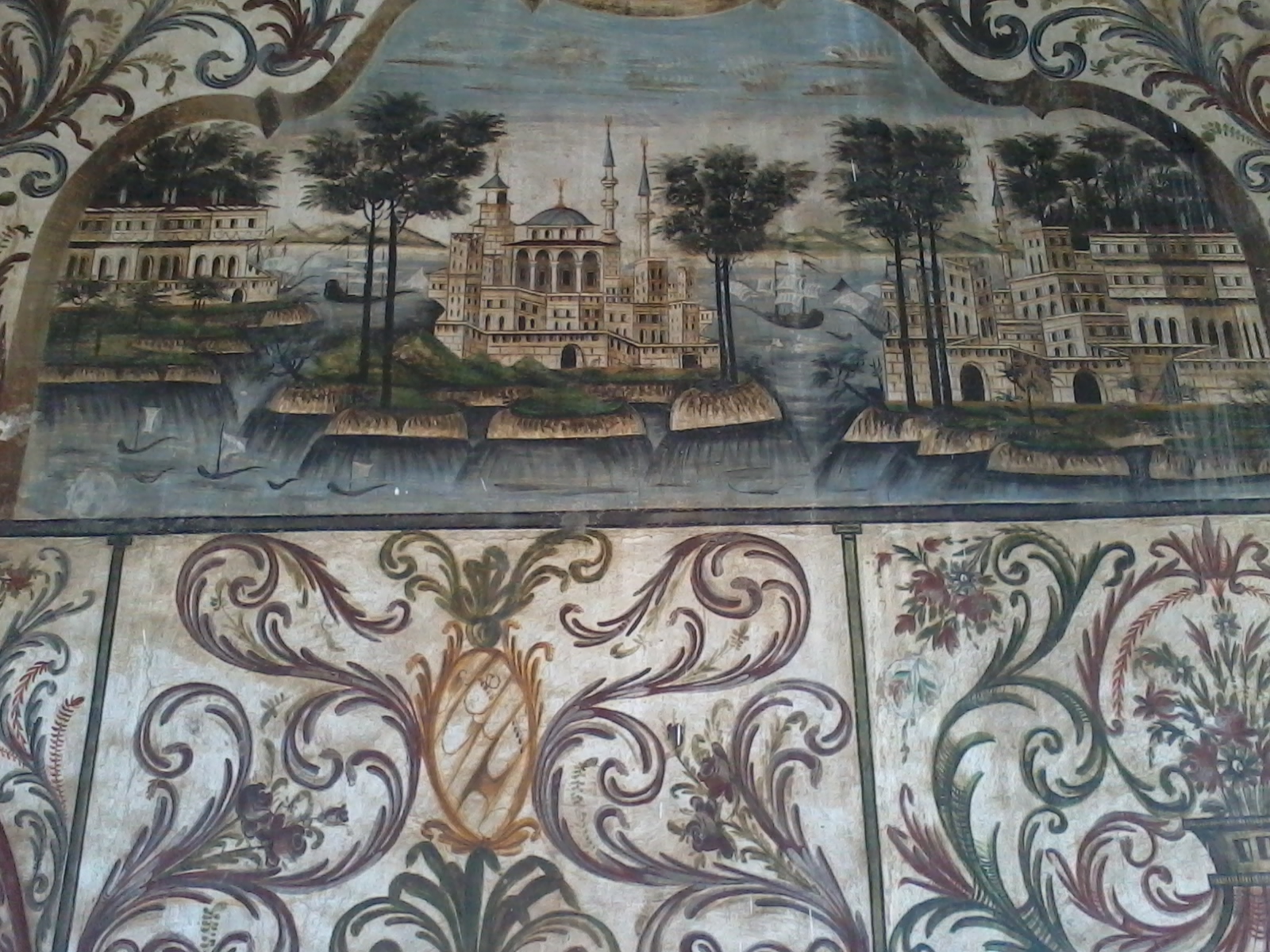When I visited Albania, in 1996, the imam at the Tirana mosque very kindly invited me to accompany him up the minaret. I shuffled my feet nervously onto the balcony while he issued the call to prayer, gazing down over the roofs of the city, and away to the encircling mountains. Far off, high on the mountain flank, I could just see Krujë, from where Scanderbeg defied the Ottoman forces in the 15th century for almost thirty years.
Albania is a mountainous country of about 4 million people, which was all but closed to the outside world from 1945 to the early 1990s, when its secretive communist regime finally collapsed. It’s a land of ancient ruins, glorious terraced hills, unspoilt Mediterranean beaches, and really hairy driving conditions. Here’s a gypsy playing his bagpipe – a reminder that Byron thought the Albanians were close to the Scots, with their kilts and their clans. He, of course, had himself painted in Albanian dress (above).

And here’s the wonderful trailer the Albanian publisher produced – 52 seconds of true Albanian atmosphere!
Once conquered, the Albanians did a reverse take-over of the Ottoman Empire. Their horizons, bounded by the mountains and the seashore of their own small country, expanded. Albanian devsirme boys went on to dominate the Janissary Corps. The Köprülü provided a dynasty of Grand Viziers. Mehmed Ali ultimately seized control of Egypt, founding a royal line that fell from power in 1956. So when I spotted Ataturk’s double in the street outside my hotel, everyone shrugged: Mustafa Kemal was Albanian, they assured me.
Now a site has been cleared for a new mosque nearby, but the delightful roccoco building erected in 1703 is in immaculate condition, decorated inside and out with floral panels and these delightful glimpses of an Ottoman paradise.


